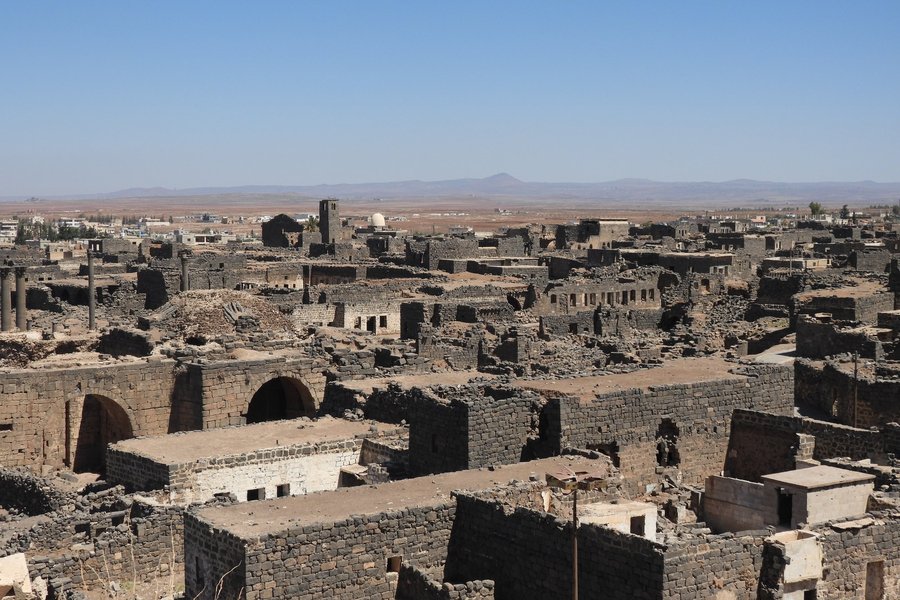
I was close to Bosra 5 months ago, when I visited Umm Al-Jimal. That Jordanian WHS lies just some 25km away and is said to have been within the sphere of influence of Bosra. However, although the two share the distinctive black basalt as the main building material, Bosra was clearly the more prominent city during the Roman and Byzantine eras.
We visited Bosra as a day trip from Damascus, the drive is just 1h45 minutes one way. It’s an easy turn-off from the strategic main road to Amman. In the distance, we could see the Druze city of Suwayda, the only place declared out of bounds during our trip due to fighting as recent as July 2025 (it wasn’t on the itinerary anyway). Everything was fine on the ground in Bosra, but some leftover graffitti here and there attested to the city’s prominent role in the toppling of the regime of Assad.
There is clearly an Old Town and a New Town in Bosra. We parked near the entrance of the citadel (yes, another one in Syria – they do castles well). This one, though, is the shell that encapsulates the great Roman Theater. It has been wonderfully preserved, including the stage, and is among the very best remaining of its kind. The grounds of the citadel also have some good mosaics and sculptures.
I had put some effort into adding Points of Interest to our Bosra site map, and managed to pinpoint almost all historic sights. Only …
Keep reading 0 comments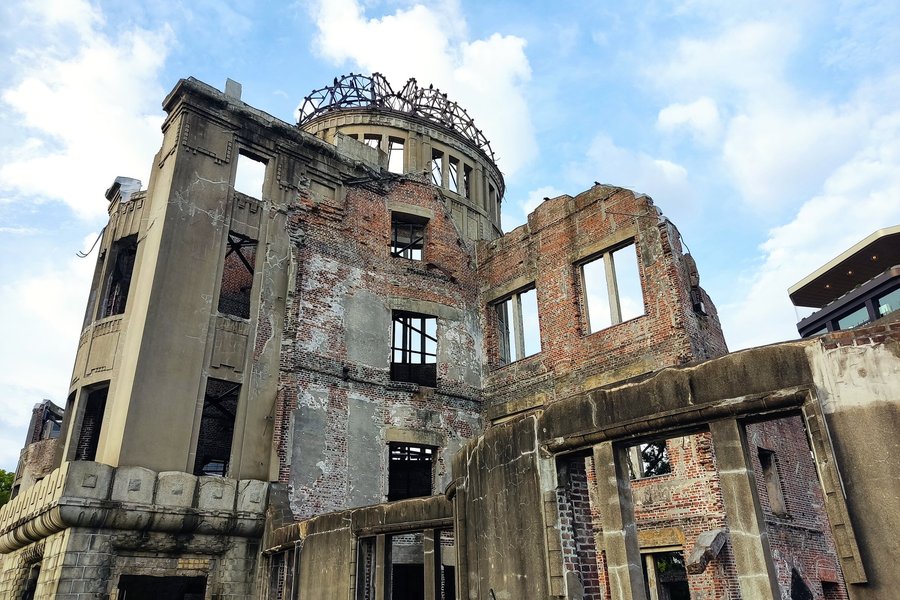
Time of the visit: 3-13,sept.,2025
I stayed in Hiroshima for 10 days and I passed the ruins of the former industrial promotion site every day,often several times a day during daytime and nighttime. Worldwide known as a symbol of the atomic mayhem which took place at the end of WW2 the building itself is nothing from another dimension.
However,it is the face of the first used atomic bomb against human beings.
I also visited or crossed the peace park opposite the Genbaku Dome several times as I often had to take the tram from there.
The Hiroshima Peace Memorial museum leaves no one cold or indifferent...including me. I left feeling sad and depressed. I visited all the different components of the park (fountain of prayer, resthouse, bell, memorial for the Korean victims, etc.).
I also visited the nearby Honkawa Elementary School Peace museum and the Fukuromachi Elementary School Peace Museum( ca a 5 min walk from the Peace Memorial museum).The schools were the closest ones to ground zero when the atomic bomb fell on August 6, 1945. Both schools lost hundreds of students and teachers.I would strongly recommend to visit both places as both schools complement the main museum well IMO.
I stayed in an old-style japanese house near the harbour which was built in 1929. It was witness to the nuclear attack.
One evening, while I was surfing the internet in bed, one of the old Japanese sliding doors toppled out of its frame and fell on my head. …
Keep reading 2 comments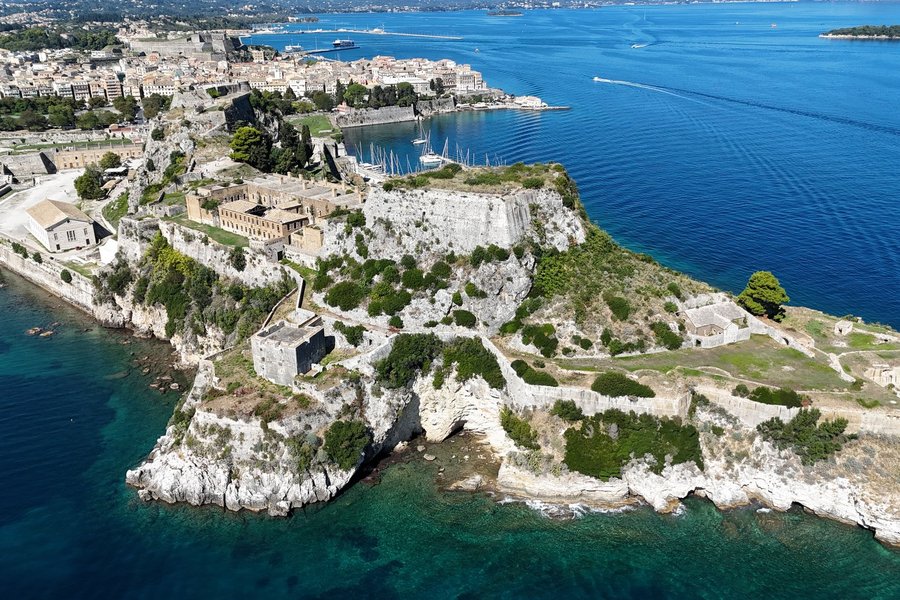
Yes, like others, we did a day trip to Corfu. We wish we could have given it more though, but logistics did not allow it. Based in Saranda, you are spoiled with choices for ferry crossings. The earliest leaves at 0600hrs for the early starters and the last one back is about 1900hrs. A fast ferry on a Hydrofoil is about 30 Euro per adult and is 30 minutes. 20 Euro for some of the 'slower' ones that take between 45 - 60 min. Go the Hydrofoil to maximise your time. They recommend being there an hour before boarding, not sure if because we were in the shoulder season as we visited on Tuesday the 23rd of Sept, but we turned up at 0755hrs and they just put us on the 0800hrs ferry - Bingo, another hour on Corfu.
Customs on Corfu though took back 30 minutes and was the same time period as the ferry trip itself. 2 officers processing and very slow. The taxi rank has scheduled prices on a large billboard which is great, as sometimes you feel you may be taken for a ride with pricing. Stating such, they are still quite high. Walking into the old town and port is only about 20 - 30 min and there are sights along the way to explore and see, so do the walk rather than taxi. Strategically, we choose this date to visit, as after reviewing the Port's Cruise Ship arrivals, there was none on this day, …
Keep reading 0 comments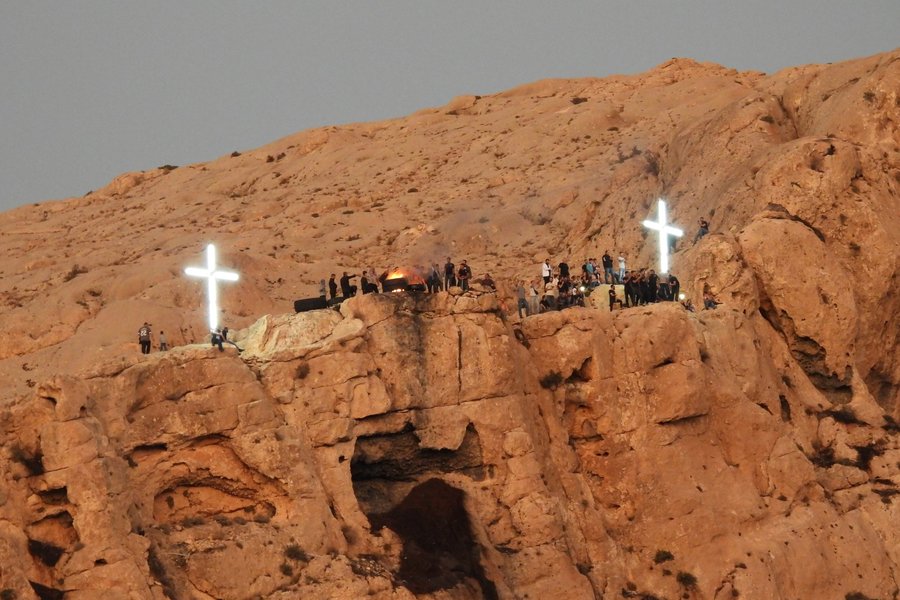
One of the charms of Northern Iraq, Northern Syria and Lebanon is the existence of remote Christian sites. Sometimes these are relict landscapes, but there are also thriving religious communities. This diversity is the strength of the region, but also the source of so much discontent. Maaloula is such a Christian refuge, and it might even be Syria’s next nomination to become a World Heritage Site: it was submitted for a Preliminary Assessment last year. It would be an “interesting” choice, a bit like the Taliban reporting on the conservation status of Bamiyan. Maaloula suffered badly in 2013/2014 when it was taken by the Al Nusra Front, whose former leader is now the president of Syria.
The itinerary of my tour was planned in such a way that we would be in Maaloula during the Christian Festival of the Cross, which is a celebrated yearly event by the local community. On the approach to the town, security surely had been tightened: armed soldiers looked into the boots of cars and there were canine units (to sniff bombs?) as well. These security guys are all 18 to 20-year-old Muslims with long beards, appointed by the new regime.
The setting of the town, at 1500m altitude, is still very fine, but there is a lot of damage to its buildings. On the hills around town, you see recently added Christian symbols, such as a large statue representing the Virgin Mary and one of Saint Charbel (a holy person in the Maronite Church). …
Keep reading 1 commentmarc Rouserez
Montagne Sainte-Victoire et sites cézaniens
Montagne Sainte-Victoire et sites cezaniens (On tentative list)
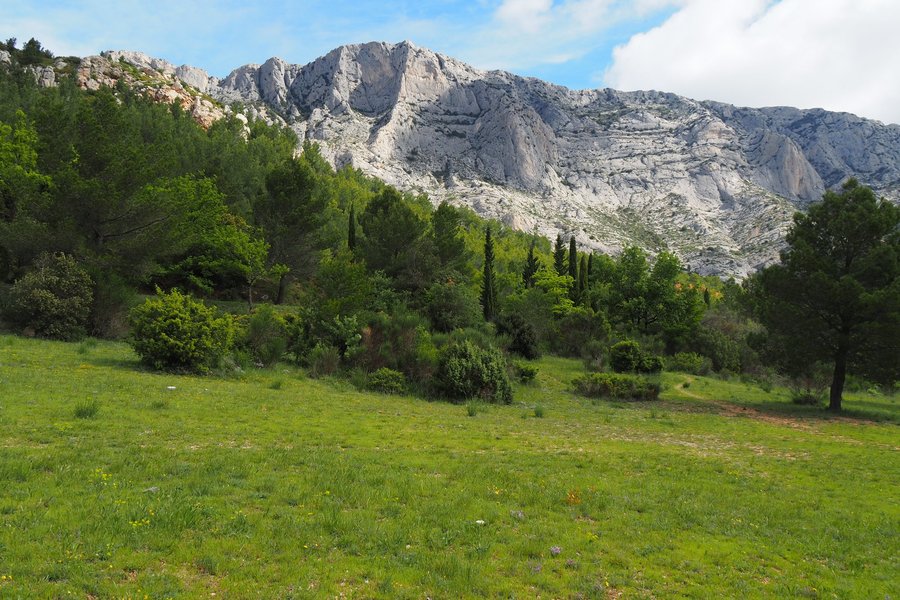
It's best to visit Aix-en-Provence off-season, forgetting as quickly as possible France's attempt to add the Sainte-Victoire mountain and the places where the painter Cézanne lived to the World Heritage List. In this, I fully agree with Matejicek! I don't understand why Cézanne? Why not Bonnard, Picasso, Matisse, to name just a few of the great French painters? Or Rothko's chapel? The history of painting did not stop with him, and other painters also lived somewhere and left their marks... Unless greed rears starts to show in Aix?
With all the good will in the world, we tried to visit Cézanne's studio: closed for renovation, the Château du Jas de Bouffan (which is actually a big house): closed for work. The Bibemus quarries: by reservation with a guide on another day. We fell back on the Granet Museum where a meager collection of Cézanne's works is exhibited: 10 paintings in total and a few engravings and drawings far from being major works, also closed. Finally we visited the temporary exhibition.
When you're frustrated, the best thing to do is to go for a walk in nature, under the Sainte-Victoire mountain for example, but, although the walk was very pleasant, this mountain has nothing special that could justify any inscription. Its karst relief culminating at 1,011 meters is nothing characteristic, like this one can find hundreds of them elsewhere in Europe and in the world...
We drove the mobile home Wilson up to the "La Maison Sainte-Victoire" interpretation center, where you …
Keep reading 0 comments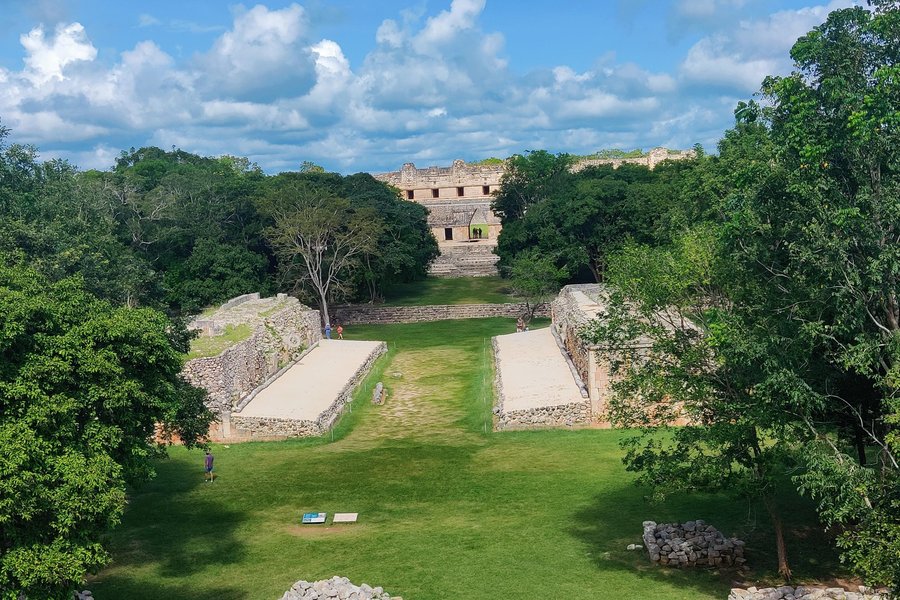
I have now visited Uxmal twice: first in 2003 with my family, and again in November 2024. In 2003 we stayed at one of the very nice hacienda style hotels just up the road and were able to visit several of the Puuc Route sites in addition to Uxmal. In 2024, we visited Uxmal as a day trip, driving from Merida. The main highlights of the site are mostly unchanged across the decades: the unique rounded-cornered Magician's Palace, Nunnery Quadrangle, Governor's Palace, and Grand Pyramid are are still very impressive. Other smaller details like the turtles carved on the House of the Turtles are also fun to find. The combination of these grand buildings makes Uxmal one of the top ancient Maya sites to visit.
An advantage to staying close by in 2003 was that it let us come back at night for the Sound and Light show that they had at the time. We watched the show from the Nunnery Quadrangle and it was a special treat to be among the ruins after dark, although the repeated, "Chaac!" chants during the show did unsettle my then-8-year-old a bit.
In our 2024 visit, we picked up a local guide at the entrance, and he provided worthwhile commentary, such as pointing out significance of the serpent and geomentric carvings at the Nunnery Quad, or other buildings on site.
Nearby Sites
As others have mentioned, this WHS incorporates other Puuc Route Maya sites. In 2003 we made it a point to visit …
Keep reading 0 comments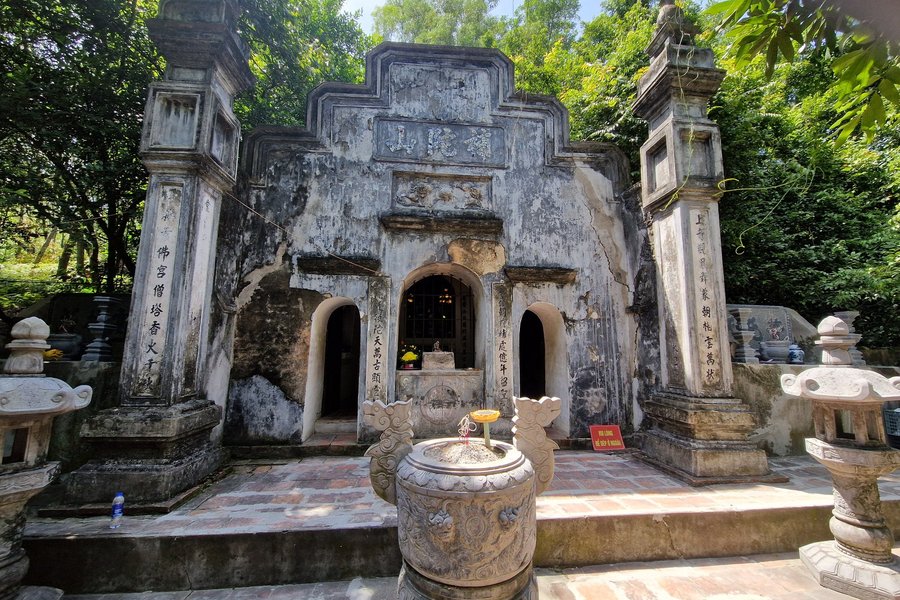
Out of the 12 components of this inscription, I've only seen one – the Bo Da Pagoda. I suspect this will be the most frequently visited, as it's by far the closest to Hanoi. I can't compare Bo Da to other places, but I must admit my visit was satisfying.
Yen Tu's entire post centers around the Truc Lam Zen school of Buddhism, a purely Vietnamese sect within Buddhism. The history of Bo Da is even older than Truc Lam Zen. The pagoda, also known as Quan Am (Goddess of Mercy) or Bo Pagoda for short, lies at the foot of a pine-covered hill, or actually now occupies a very large part of its territory.
According to a legend, the Goddess of Mercy helped a poor childless couple there. One day, the husband was cutting pine trees at the top of the mountain when he found gold coins. A monk told him that it was a miracule of the goddess. The woodcutter asked the goddess to give him a son, saying that if she did so he would build a pagoda to worship her. The wish was fulfilled, and he did as he had promised. Since then, the pagoda is known from fulfilling the wishes of people praying to the goddess.
Bo Da seems to be very popular, as there's a huge parking lot in front of it. However, on the day of my visit, there were no visitors there, absolutely no one except me. The entrance portal offers some …
Keep reading 0 comments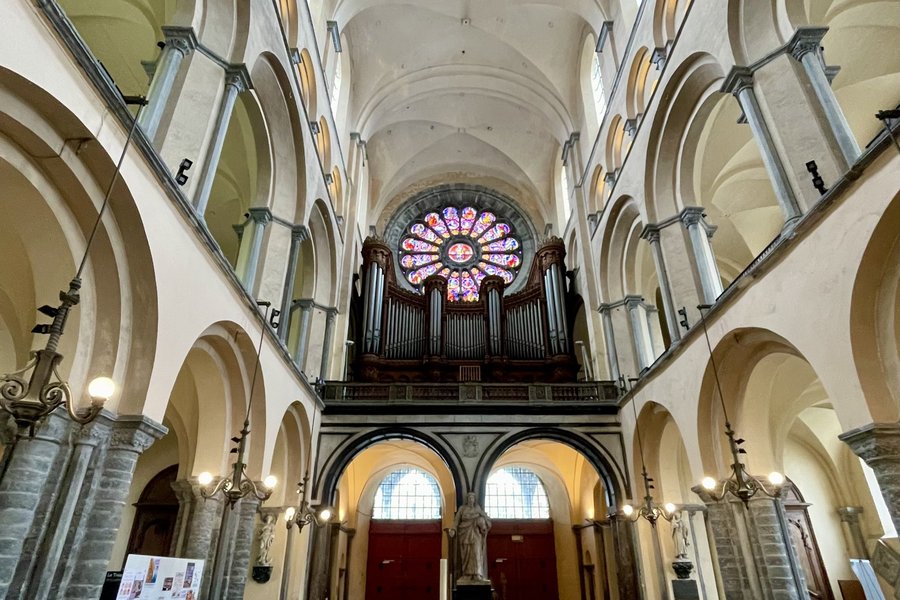
Arriving by train, the entrance to the cathedral is a pleasant 15-minute walk through the center of town. As you approach on foot, the immense structure looms like a grey mountain over the Rue Royal. Enter on the northern porch, or you will miss the impressive row of statues flanking the entrance. This door will empty you directly into the nave.
Starting on your left, a series of educational displays lines an archeological dig. After the 1999 tornado, the building was closed for repairs. Although unfortunate for visitors and congregants, this provided a unique opportunity for historians to investigate the origins of the ancient structure. The displays walk through the eras of change of this site endured, from Roman baths to a private residence to a cathedral. You can clearly see the dramatic differences in architectural style between each layer of the digsite.
The rest of the building is still under scaffolding. Broken windows still can be found around the south and east sides.
The cathedral is free to enter, but there is a treasure room with assorted relics that requires a few euros to tour. Photos are not allowed in the treasure room. There were no staff visible in the main part of the cathedral during the time I visited.
Keep reading 0 comments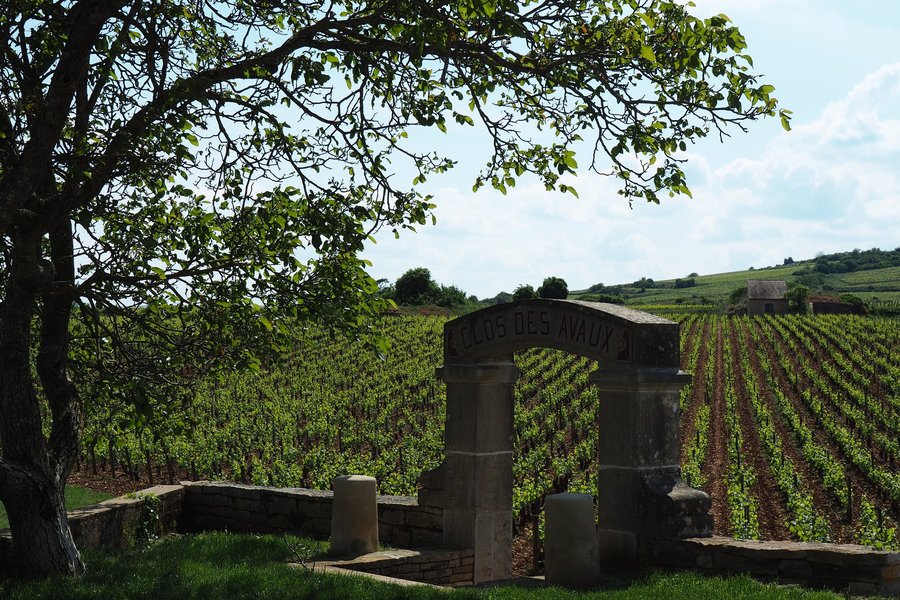
Northern tourists who take the "autoroute du soleil" south skirt the Burgundy vineyard's climate classification zone, and it would be a shame not to stop there. This is what many of my friends do, because, coming from Belgium, Beaune is located halfway between Belgium and Provence. Enough to make the most of it...
As for us, we had already been to Dijon and Beaune several times but never with the UNESCO classification as the theme of our visit. This is what we did in May 2025. We first visited Dijon and its emblematic buildings in the city center: le Palais des ducs, Place de la Liberation, the municipal library, etc. then wandered in a mobile home along the roads of the Côtes de Nuits. Be careful, the map that delimits the classified areas is not clear on the UNESCO portal; in Dijon it is relatively small and can be discovered on foot very quickly. On the return trip on the same route, we completed our trip with a visit to Beaune and the Côtes de Beaune.
By car, the ideal is not to take the D974 national road but the small departmental road that connects the wine-growing villages of Gevrey-Chambertin, Vougeot, Nuits-St-Georges, etc. All these names of great wines are obviously dreamy. This road is passable for a 6 m long mobile home like ours. We made a small detour on foot to the summit of Mont de Sène to have an overview of the AOC vineyards of Santenay which …
Keep reading 0 comments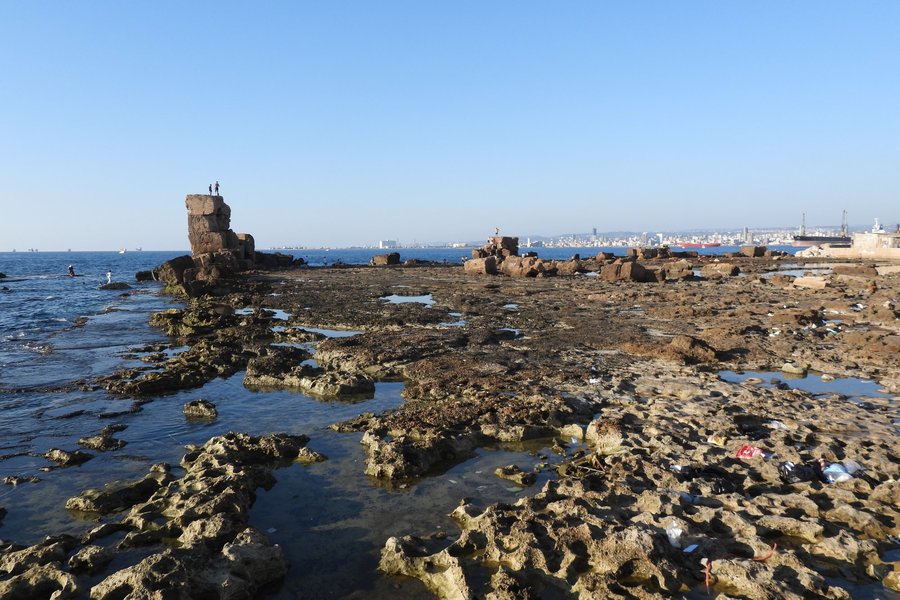
Arwad is a small island that was settled in the early 2nd millennium BC by the Phoenicians. The still inhabited island lies across the sea from the Syrian port of Tartus (the ancient Tortosa), which its fortifications helped to protect. In the time of the Crusades, it was used as a bridgehead by the Crusaders. It was the last piece of land that the Crusaders maintained in the Holy Land.
You may never have heard about it, I certainly didn’t, but in ancient times, this was an important place. It was written about by Strabo, and features in the Amarna letters and the Bible. It thrived from the 2nd millennium BC to about 1300, and now is trying to make a comeback on Syria’s tourist circuit. This article from Aramco World describes its story well.
Although it was on our itinerary, our guide tried to dissuade us from going as previous tourists he had taken there found it filthy and warned him to take it off the itinerary. The Bradt Guide describes it as “the whole place is horribly polluted … inadequate sanitary conditions”. But we were stubborn: my trip mates fancied a boat ride and I wanted the experience of a so far unreviewed and “unpictured” TWHS. The island is a popular outing from the city of Tartus: from its marina, public ferries leave constantly to make the 20-minute crossing. On a Saturday afternoon, it did not take long for our boat to fill with Syrian day trippers.
I …
Keep reading 0 comments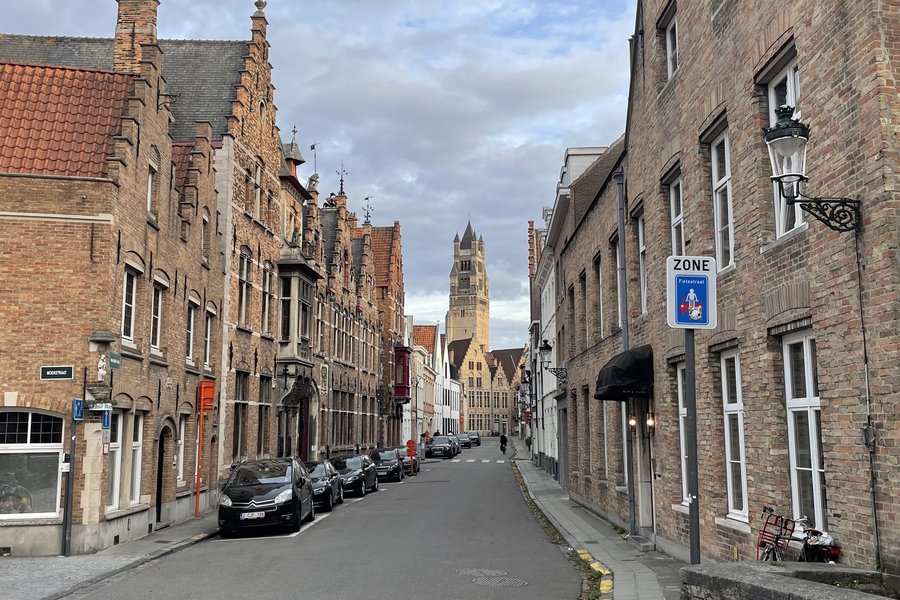
Arriving in the city by train, you'll be treated to a pleasant walk featuring the old city walls and canal. An entire trip could be devoted to a tour of these ramparts and their historical features. The route up to the center takes you near the city's beguinage and ends at the belfry. In this way, three heritage sites could be combined in a single 30-minute walk, but I would advise spending extra time getting to know this storied town. I had three days in this city, but could have spent months exploring.Bruges is fundamentally a medieval seaport, a surprising fact for anyone looking at its location on a map. The Romans founded the city on a tidal inlet, which grew in importance under the Franks and throughout the Middle Ages. Silting of the tidal inlet in the 11th and 12th centuries required extensive engineering efforts to combat. This struggle to maintain direct access to the sea continually threatened the city's survival until a modern port, Zeebrugge, was completed.The Stadhuis or City Hall provides an excellent survey of this history via a series of murals and an augmented reality presentation. Once you've acquainted yourself with the founding legends, climb the belfry and stop at each landing to learn more about these chapters from history.I was able to see all of this and several other historic sites with a Belgian Museum Pass. As an American, it was as simple as signing up on the website and using my …
Keep reading 0 commentsmarc Rouserez
Funerary and memory sites of the First World War
Funerary and memory sites of the First World War (Inscribed)
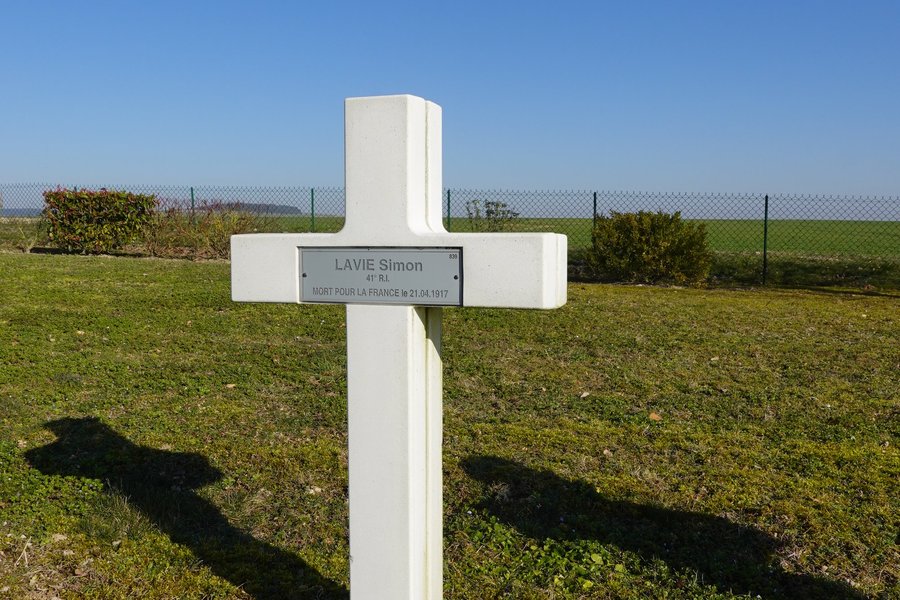
The transnational serial UNESCO World Heritage site "Memorial Sites of the First World War (Western Front)" is touchy. It could be the subject of controversy since it was inscribed on the list by the World Heritage Committee despite the ICOMOS advisory opinion being unfavourable considering that criterion (iii): bearing a unique or at least exceptional testimony to an existing or vanished cultural tradition or civilisation was not demonstrated and that the justification for criteria (iv): offering an eminent example of a type of construction or architectural or technological ensemble or landscape illustrating a significant period or periods in human history and (vi): being directly or tangibly associated with events or living traditions, ideas, beliefs or artistic and literary works of outstanding universal significance was too imprecise.
I will not enter here into the technical-political controversy concerning the opinion of ICOMOS and the choice of the World Heritage Committee; I will only give this column the point of view of the simple traveler-tourist with regard to criteria (iii), (iv) and (vi).
I had already visited Verdun several times during my childhood, my adolescence and then with my family: it was necessary for my children to become aware of what modern warfare is and its consequences. Previously, my wife and I had already visited some places on the site, taking advantage of one trip or another to the south.
For clarity, as there are 139 listed sites, which is a lot, I am using the UNESCO nomenclature to designate each …
Keep reading 0 comments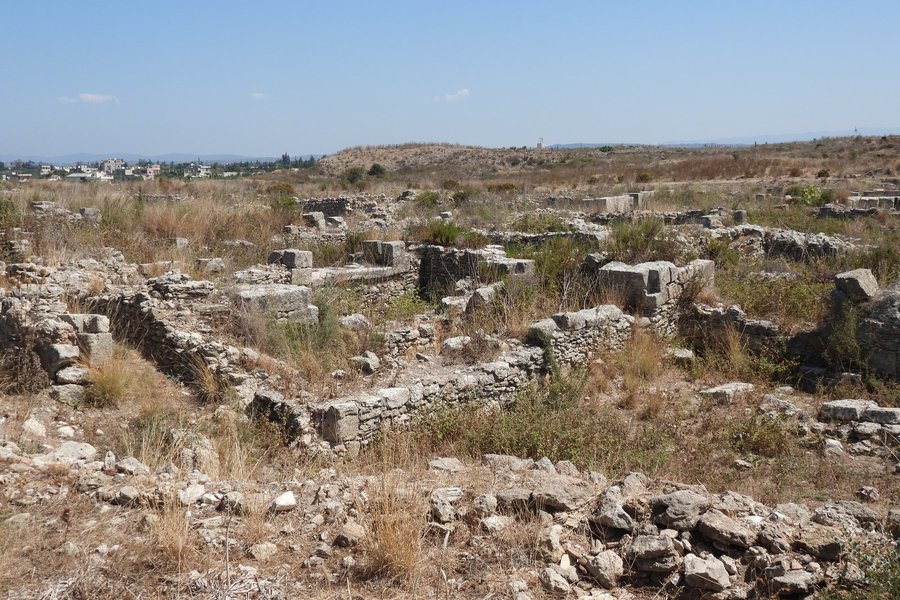
The Tentative Site of Ugarit (or Ugrarit) lies just outside the Syrian coastal city of Latakia. The archeological site is fenced, staffed, has some information panels in Arabic, English and French and requires an entry fee. It is foremostly known for its revolutionary role in the history of writing: the scribes in this trade city invented the first phonetically based script, the first alphabet of 30 letters, to cater to the speakers of many different languages passing through that needed their services.
Their city flourished in the late Bronze Age, in the second millennium BC, when the Ugaritic Kingdom controlled lands deep into what is now northwestern Syria. Of course, as WH Travellers we know what to expect visiting a site as old as this, but my four trip mates bailed out at the first sight of this field of stones. They waited in the shade at the entrance for me to finish my private tour with a local guide.
The site was only rediscovered in 1928 and is largely unexcavated. Still, the outlines of the vast Royal Palace complex are easy to see: it had no less than 90 rooms. Much of the grounds is now overgrown with weeds – more a sign of the fertility of the ground here than a lack of maintenance, I was told. We even found the discarded skin of a snake, so from that point on, we tried to avoid areas with high grass.
The archive room where the clay tablets using the …
Keep reading 0 comments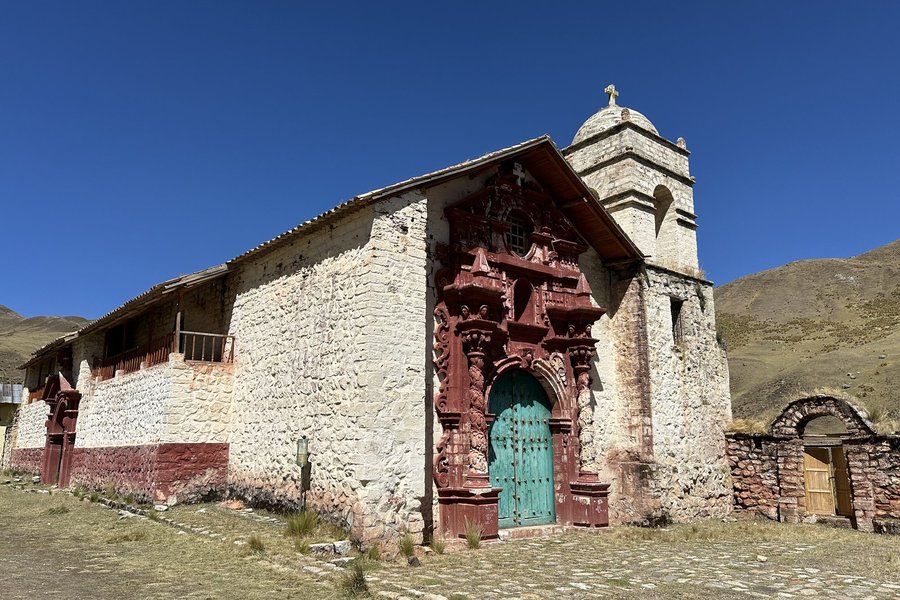
The Santa Barbara Mine was one of the most important mines in the Western Hemisphere in the 16th and 17th Centuries. The mine provided the mercury to separate the silver that was mined in Mexico and Bolivia. The mine was also k own as the mine of death, as numerous laborer, mostly indigenous died during the mining operations.
The mine is located above the very pretty colonial city of Huancavelica, which was one of my favorite cities to visit in Peru. Huancavelica is rarely visited by foreign tourists, as it is off the main tourist route. I reached it from Ayacucho. You can reach it through infrequent buses, that usually requires a transfer. I hired my own vehicle and driver. An expensive option, but a beautiful 4 hour drive. Huancavelica is much more accessible from Huancayo - which is where I went after, there are also a few overnight buses to Lima.
the mine site is located 7 kilometers from town by a very pretty, and not too strenuous walk. There is also a good dirt road - which is about 15 kilometers in distance. There is no public transport, but it would be easy to hire a taxi in town. I walked the trail (which connects to the road) there and back.
I had the site to myself. There are a few signs mostly in Spanish, with some English translation. The first place you encounter is the now closed, concentrating plant. This actually was built in early 20th century. …
Keep reading 0 comments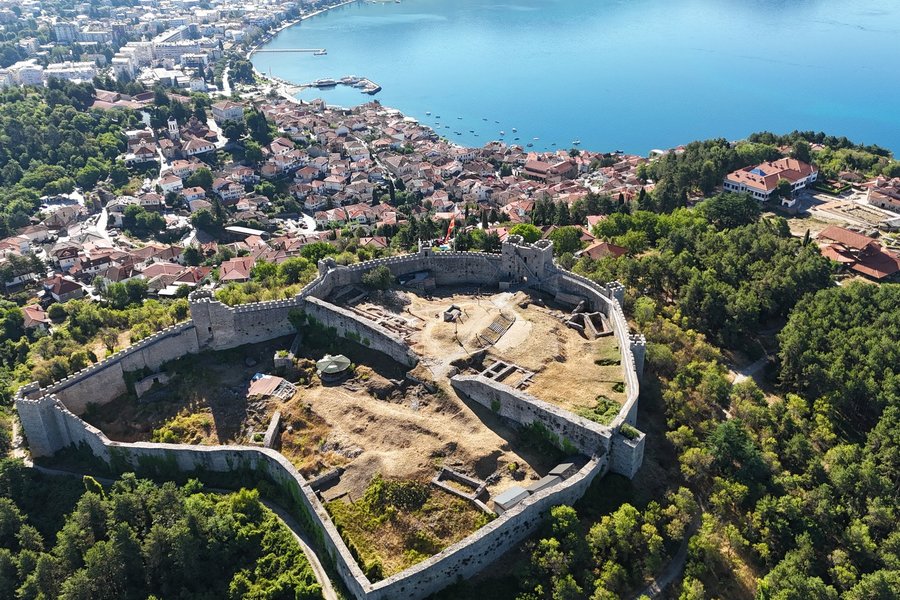
We based ourselves in Ohrid old town for 1 week in September 2025 to explore the town as well as the eastern coast of Lake Ohrid. We did not get an opportunity to explore any of the Albanian side of this inscribed site. There are many sites within Ohrid itself to visit in the old town and there are a significant number of 'small' Churches and Mosques dotted throughout the township. The significant sites though that we found were Samuel's fortress, the Church of Saints Clements of Ohrid, located in the Plaoshnik Archaeological Park, Church of Hagia Sophia and the iconic church you see in all the photos, Church of Saint Jovan. Much of the old walls remain around the old town.
It was interesting to arrive in Ohrid after the near miss that this UNESCO inscription received in 2025 about nearly being Listed as in danger, in the main due to the lack of infrastructure planning (and approvals) in the Region with the degradation of its Natural and Cultural Heritage. You can certainly witness the construction boom in the area. It is evident. It may be only a slight thing, but even in the beautiful little courtyard area we stayed in the old town, you can see modifications to buildings and structures that definitely are not keeping with the historical context of the building themselves. I am hoping that this jolt of a near miss by them this year, that this is rectified going forward. A week in Ohrid …
Keep reading 0 comments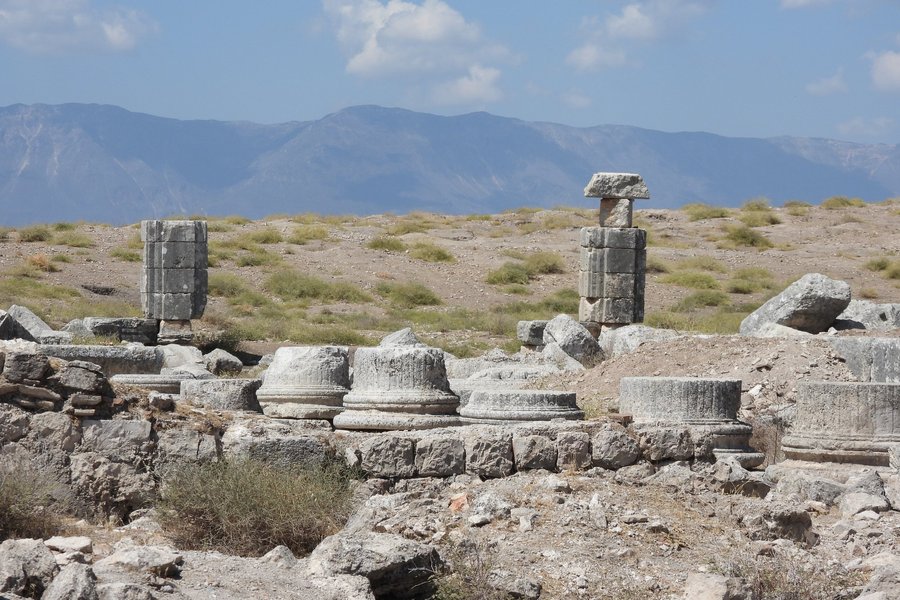
Let's start this sobering review with a Fun Fact: Apamea was named after Apamee, the first wife of Seleucid ruler Seleucus I Nicator (c. 358 BC – 281 BC). His second wife, Stratonice, also had a Tentative Site named after her: Stratonikeia. If he had had three wives, that would have made a great connection!
Although it is not as well-known, Apamea comes close to the regional biggies of Ephesus and Palmyra in terms of the importance of its Roman remains. It first blossomed during the Macedonian-Hellenistic Seleucid period, and later became an important Roman provincial capital with 117,000 inhabitants. It was damaged (by earthquakes and wars), rebuilt and restyled many times in its history.
Apamea gained some recent notoriety due to its “lunar landscape of looters’ holes”: evidence of large-scale industrial looting that occurred during the Syrian Civil War, as observed in satellite views by researchers from afar. They were dug by local treasure hunters seeking ancient artifacts when archaeological site protection fell apart. More background on its war history can be found here. From the sky it looked like this:
I shared the image beforehand with my Syrian guide, who had not been to Apamea since the war, and he was shocked. More recent satellite views show that some of the holes are overgrown now, but at the site itself, they still stand out. Directly to the left of the start of the Great Colonnade, we saw a big hole that still held a …
Keep reading 0 comments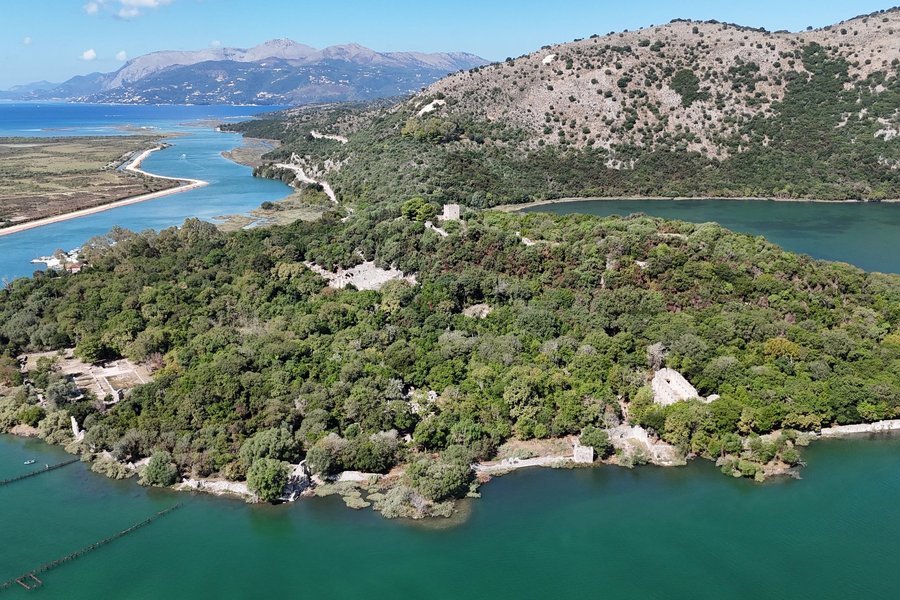
I was not going to do a review on this site as Frederik Dawson had only just completed one not more than 2 months ago, which I read prior to visiting. His experience was not great, so my expectations were low. That being said, it informed my decision making and I had a better visitor experience than Frederik thanks to his review, so wanted to share my tips to assist others.
We are staying in Saranda, so noting the carparking issue and the visitor experience, we wanted to visit as early as we could. A local bus leaves on the hour from Saranda. We caught the bus 200LEK one way ($3.50AUD) at 8.00am to coincide with the opening time of 9.00am, arriving at 8.45am, we lined up with about 30 others to enter the Park and Archaeological UNESCO site. It costs 1000LEK for entry ($18.50AUD) which was very reasonable with a number of free pamphlets supplied in different languages that provide a map of the site and highlights key parts of the ancient city and a brief history.
September was much cooler walking around the open aired site and visiting early allowed opportunities to visit key areas in the site without too many other visitors present to detract your experience, views or ambience of the area. I actually got photos and videos with no other persons present. After about 2 hours though, you started to see the large tour groups and visitors grow expeditiously, even in the shoulder / off …
Keep reading 0 comments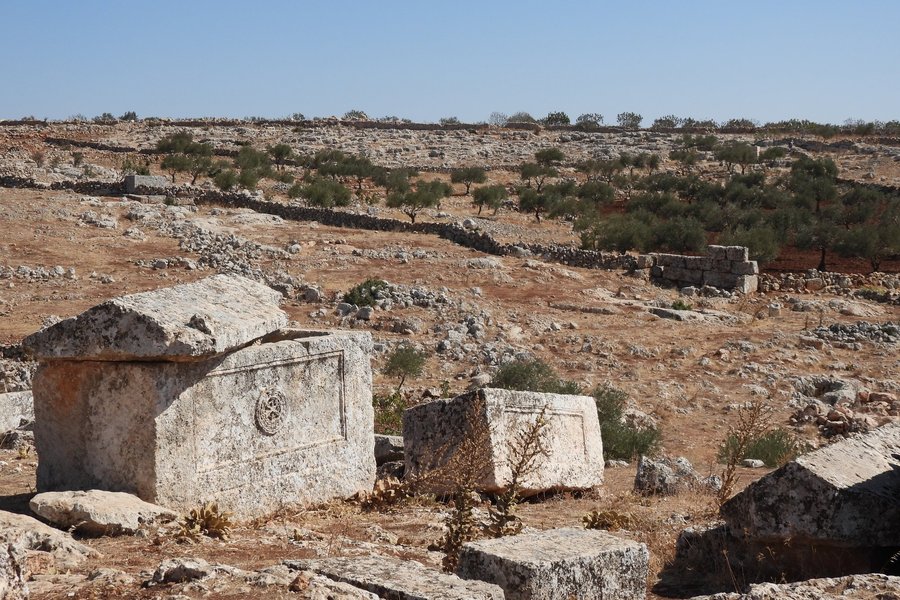
The Ancient Villages of Northern Syria have been inaccessible during Syria’s Civil War due to their proximity to the front line between the Syrian Army and the “rebel” capital of Idlib. With the former rebels now in control of the entire country, this region is also open to tourists. I went to Serjilla, supposedly the best-preserved village, but the Church of Saint Simeon Stylites (further north) had also been visited by my local guide recently with a foreign tourist. The 2025 State of Conservation report states that some villages, including Serjilla, were still off-limits due to the presence of landmines, but this is apparently no longer the case (although we were warned not to stray from the paths).
Serjilla is remote for West Syrian standards: it lies at the far end of a large limestone massif. Limestone is still mined in that area from open-pit quarries. It’s a harsh region with only some olive trees growing. The narrow access road is bumpy. We were welcomed by the sight of a shepherd with a large herd of sheep crossing the site – it would have been a classic picture if the sun had been on the other side!
The site is, as with so many now in Syria, unsupervised. My 2006 Bradt Guide of Syria speaks of a “ticket office”. But now there is none. The state of the buildings, considering they were built in the 5th to 7th centuries, is excellent. It’s one of those “Frozen in Time”-WHS (like Pompeii), …
Keep reading 0 comments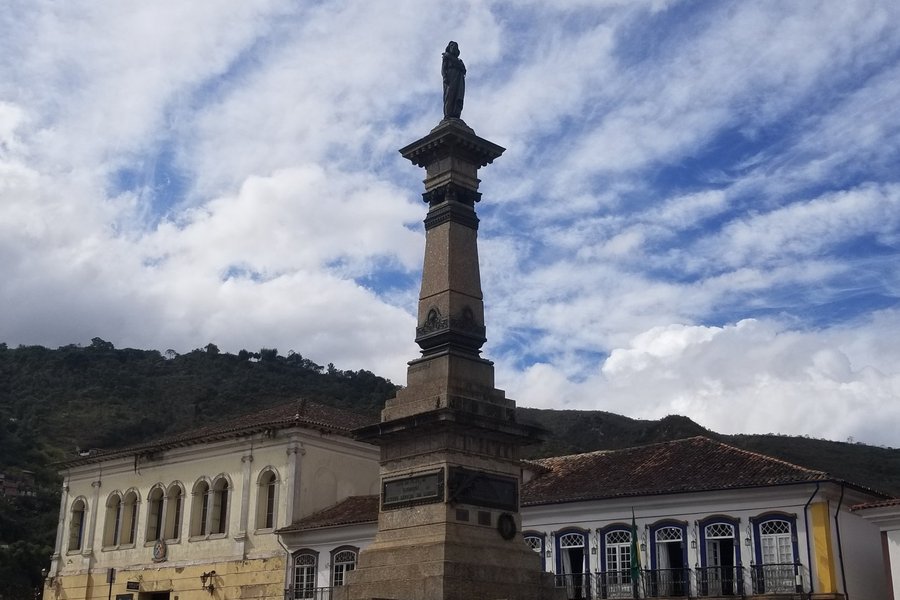
As others have said already said: Ouro Preto inhabitants must be pretty fit to walk around the inner town. Sure the town has its flatter part but you won't get anywhere on foot unless you are prepared to hike up and down. The cobble roads aren't even that great for long walks. The other downside for me was that I actually drove here. A bus would be better because you can just get off from Belo Horizonte and then do your sightseeing, return when ready. It took me a good 20 minutes to find a parking space that didn't seem illegal. While some just parked at the bus stop and resident plaques aren't always kept in line I was sure the spot (down the hill) was actually legal. So with that out of way I first had to hike up to start looking around. The central square (pictured) is clearly a good spot to start. Unfortunately there was some renovation going on at the churches and they looked covered up. No big deal because there is plenty of stuff to see and I feel the scenery around town is another highlight.
The other downside I had, as you can see from the picture, is that the weather wasn't playing nice. It was grey and dark so the scenery wasn't as wonderful as I was hoping for. It's still nice and the drive to and from the town is already a highlight. Thus the main thing I saw was the colonial …
Keep reading 0 comments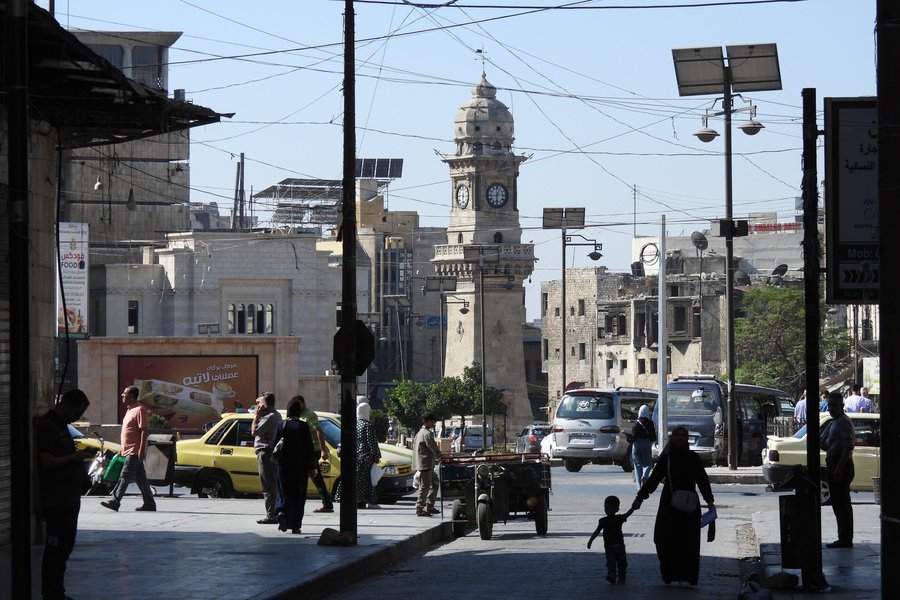
Along with Palmyra, Aleppo presents the saddest story among Syria’s WHS. Tours in the past would allocate two days to it, spending the night in one of the traditional Syrian houses converted into hotels, like those still found in Damascus. Unfortunately, the latter were as flattened as the rest of the Old City due to fighting during the Civil War and the 2023 earthquake. Like most other foreigners and business people, we stayed at the modern Riga Palace Hotel just outside.
There is still enough to see, however, to fill a full day. We started our walking tour at the Baron Hotel. The interior of this famed establishment was severely damaged during the earthquake. On the outside, it still looks fine. It has been closed for months and is up for sale.
The Maronite Cathedral was hit by a bomb, which destroyed the wooden ceiling and one of the clock towers. It has been restored with Italian money and looks splendid again. Like in the rest of Aleppo, marble is the main building material. The Cathedral serves 200 Maronite families in the city. We were warmly welcomed inside and got a “tour” from the caretaker’s young son, Tony, who was about 6 years old.
As with Mosul (Iraq), which I visited earlier this year, the churches and mosques seem to be restored first, but the houses and shops are still in rubble. The Great Mosque is not accessible at the moment – it suffered heavy damage, but at least …
Keep reading 0 comments